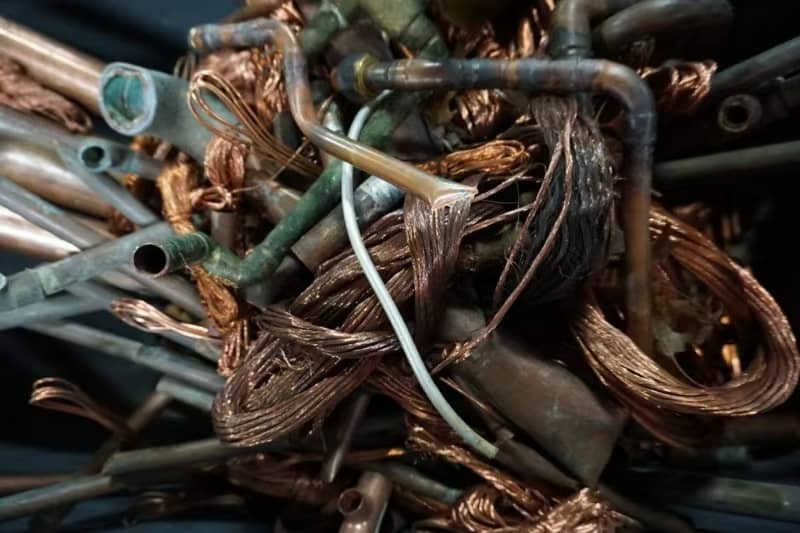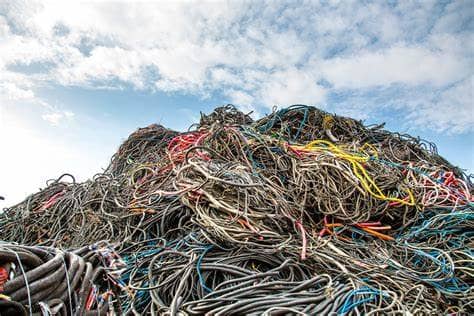Prospects And Development Directions Of The U.S. Cable Recycling industry: Market Opportunities And Future Trends
 Mar 17,2025
Mar 17,2025

 Suke
Suke
In the United States, the recycled cable industry has good market prospects, mainly driven by rising prices of metals such as copper and aluminum, tightening environmental regulations, renewable energy and infrastructure construction. The following are the market prospects and development directions of the industry:
I. Market prospects
1. Rising prices of copper and aluminum have promoted the development of the recycling market
Copper and aluminum are the main metals in cables, and global copper and aluminum prices continue to rise, promoting the profit growth of the waste cable recycling industry.
In 2024, copper prices remain high, demand is expected to continue to grow in the coming years, and the recycled copper market is highly competitive.
2. Environmental regulations promote cable recycling
The U.S. Environmental Protection Agency (EPA) and state governments are strengthening disposal requirements for used cables and encouraging companies to recycle green.
For example, California, New York and other states have legislated to limit e-waste to landfills and require companies to comply with recycling metal cables.
3. Renewable energy projects drive demand for cable recycling
The United States has invested heavily in renewable energy (wind, solar), which requires a lot of cable laying, and will also produce a lot of waste cable recycling needs.
The transformation of the transmission and distribution network will also eliminate old cables, bringing business opportunities to the recycling industry.
4. Renewal of old infrastructure drives recycling market
The United States has a serious aging infrastructure, and the government has invested trillions of dollars in the transformation of power grids, transportation and communication networks, which will produce a large number of old cables.
American Electric Power, for example, replaces millions of feet of cable each year, becoming an important source of supply for recyclers.

Ⅱ.Future Development Direction
1. Application of intelligent recycling technology (AI+ automatic sorting)
Traditional recycling methods rely on manual sorting, and now artificial intelligence (AI) + robotic automatic sorting technology is becoming widespread, which can more efficiently separate copper, aluminum and plastic sheathing.
For example, spectral recognition + automatic cutting systems can improve recovery rates and reduce labor costs.
2. Cable regeneration technology (copper, aluminum purification)
In the future, the recycling cable industry will use more pollution-free, low-energy metal extraction processes, such as hydrometallurgy and electrolytic recycling technology, to improve the purity and added value of recycled metals.
3. Develop compliance and green recycling system
Obtaining environmental certification (such as EPA, ISO 14001) will become the industry standard and enhance the competitiveness of enterprises.
In the future, the government may introduce subsidy policies to encourage cable recycling companies to adopt environmentally friendly processes.
4. Expand the international market, export recycled copper, aluminum
China, India and other countries are the world's largest copper and aluminum consumers, and the United States has huge potential for recycled copper and aluminum export markets.
Some recyclers are already trading internationally, processing recycled copper and aluminum for export to Asia and Europe.
5. Electronic waste (E-waste) recycling combined with cable recycling
In addition to cables, electronic equipment such as electric vehicle charging piles, batteries, and motors will also become an important growth point in the field of recycling in the future, and many companies have already laid out this market.
Ⅲ. The Direction Of Entry
1. Set up waste cable recycling station
Focus on recycling waste cables from construction sites, infrastructure projects and factories.
Working with power companies, data centers, communication operators, solar power stations, etc., to recycle obsolete cables.
2. Develop scrap copper and scrap aluminum processing business
Direct recycling cable profit is lower, and after processing sales of pure copper, pure aluminum, higher added value.
Can invest in cable stripping machine, copper rice machine, metal separation equipment, improve profit margins.
3. Cooperate with power and communication industries to improve the stability of recycling channels
Power companies replace a large number of high-voltage cables each year and can sign long-term recycling contracts.
The data center and communications industry is also constantly upgrading network equipment, which will produce a large number of waste optical cables and cables.
4. Apply for environmental protection subsidies to enhance market competitiveness
Some state governments have scrap metal recycling subsidies and can apply for environmental recycling grants to improve corporate compliance.
IV. Summary
Market prospects: rising copper and aluminum prices, strengthening environmental regulations, renewable energy and infrastructure upgrades bring a large number of waste cable recycling opportunities.
Development direction: Smart recycling, environmental protection technology, international trade, electronic waste recycling has become the future trend.
Entry suggestions: recycling station + metal processing + power company cooperation + environmental compliance to enhance competitiveness.


 Home
Home Carbon Tariff Countdown: How Can Biobased Insulation Restructure The Cable Supply Chain?
Carbon Tariff Countdown: How Can Biobased Insulation Restructure The Cable Supply Chain?  You May Also Like
You May Also Like

 Tel
Tel
 Email
Email
 Address
Address














